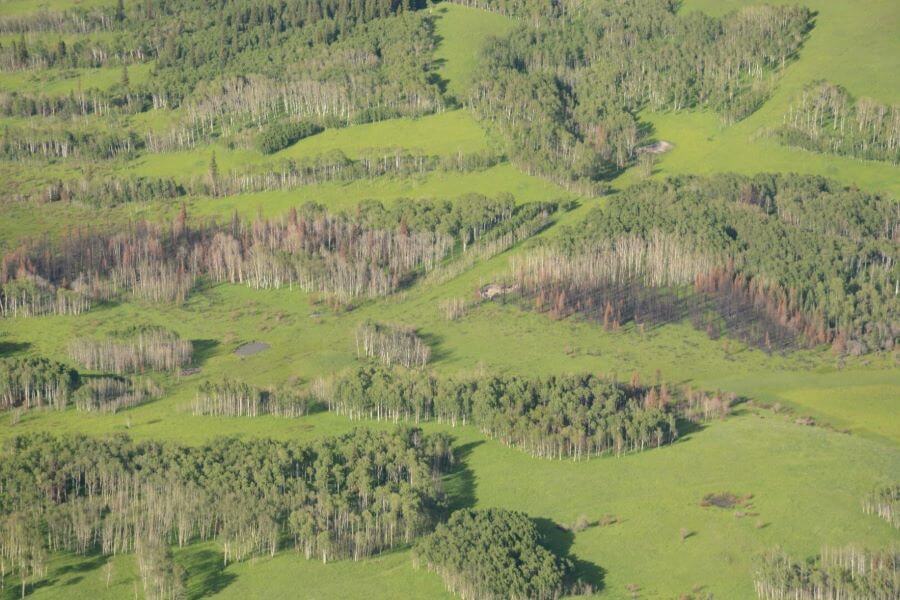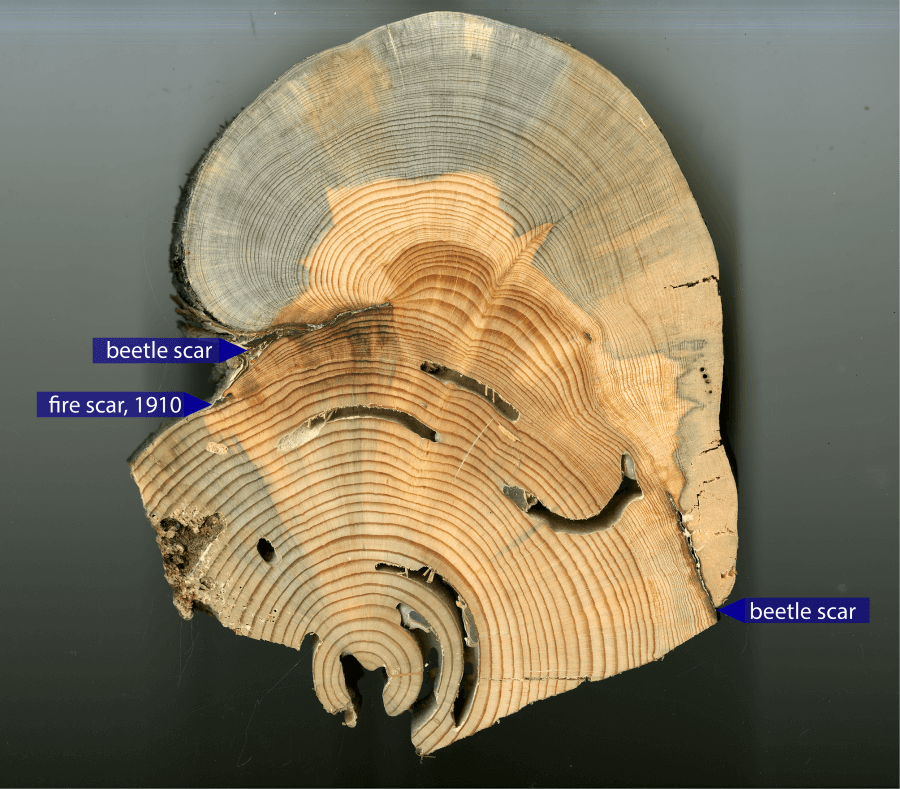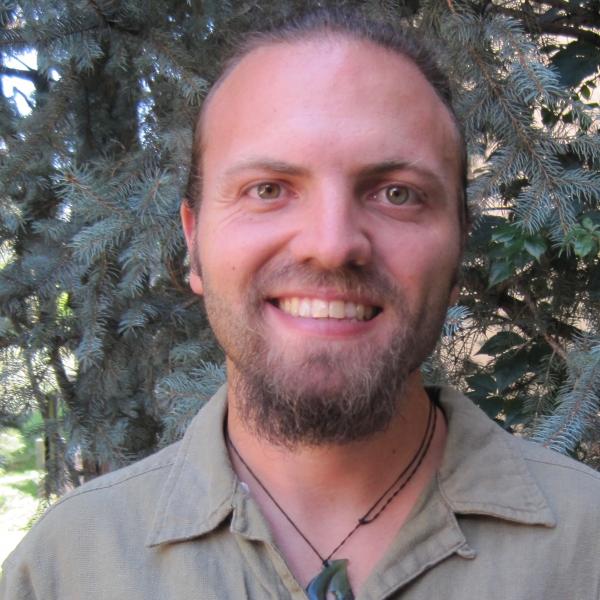By Sonya Odsen
Summer is here, and that means the Landscapes in Motion field crews are beginning the data collection process in Alberta’s southern Rockies. Owen Fitzpatrick, Anna Howard, Alana Gonczar and Ashton Many Grey Horses will be collecting fire scars, tree cores, and vegetation structure data with Cameron Naficy of the Fire Regime Team over the next few months, and they are excited to be part of this project.
A successful field research program relies on many different things going right, but at the heart of it, it depends on the careful and efficient data collection by its field crews. Painstakingly recorded fire scars, cleanly extracted tree cores, and methodically measured vegetation structure are at the heart of a large part of the Fire Regime Team’s work. This is why it’s so important to have a field crew that is not only excited to get into the field, but also cares about the research itself. This year’s field crew—Owen, Anna, Alana, and Ashton—embodies these values. We had a chance to speak to the crew as they geared up for their field season, and we look forward to learning how things are going over the next few weeks.
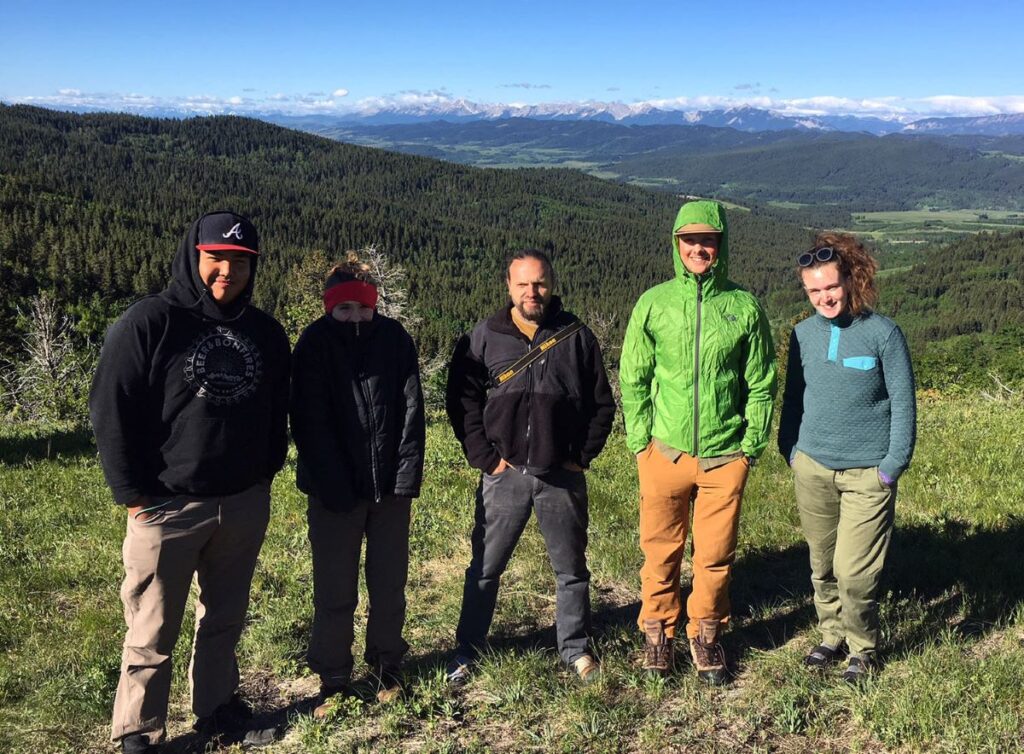
Each crew member brings a different background and different experiences to this field season. Owen, Alana, and Anna have travelled to Alberta from the University of British Columbia for this work. At school they discovered a keen interest in landscape ecology, the role of fire regimes, dendrochronology (learning about a tree or forest’s history by studying tree rings), and the effects of climate change. This summer’s field work and their work in Lori Daniel’s Tree-Ring Lab at UBC are providing them valuable opportunities to learn more about these subjects first-hand as they help piece together the fire history of the southern Rockies.
Ashton Many Grey Horses, a member of the Piikani Nation, joins the team from Alberta. While Ashton is the youngest member of the group, he is also the most experienced, having worked with the field crew the summer before. He originally joined after the Fire Regime Team reached out to his community—he was curious what this path might have in store for him and thought he would give it a shot. Working outdoors, hiking, and seeing a new forest every day were rewarding experiences for Ashton, and he is looking forward to adding to these experiences with a new team this year. This is also work that he feels he is good at, and clearly Cameron Naficy and Lori Daniels agree.
The crew spent the late spring setting themselves up for success in the field. Over at UBC, they worked with software to measure tree rings that were collected in previous summers. This task helped them visualize what they will be doing this summer; it also motivated them to collect the best possible samples to ensure they can obtain accurate data from them. They looked at fire scars on tree cookies that were collected in previous years, which was a meaningful experience for Anna. It’s one thing to understand that some trees survive multiple fires, but quite another to see how these scars continually shape and reshape a tree as it grows.
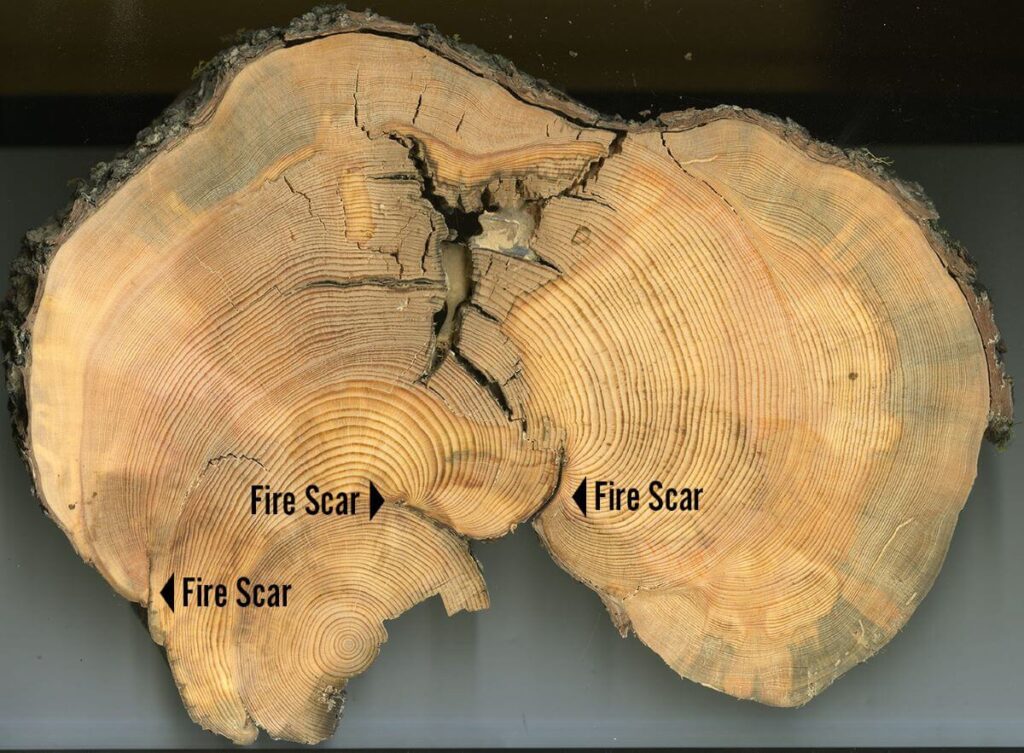
This tree lived from 1797 to 1989 and has scars from multiple fires between 1831 and 1910. Photo by Cameron Naficy.
Field preparation also means a strong focus on safety. This means things like first aid training, bear safety training, radio training, and more. They will also be using some chainsaws this year—Ashton’s experiences last year were limited to taking tree cores, and he was happy to learn a new skill with his team during their chainsaw training and certification. Lori Daniels, the Fire Regime Team Lead, also walked the team through dangerous and frightening scenarios that have occurred in the field in the past. These scenarios helped them think critically about what they would do in an emergency. By hearing about what others did and learning from their experiences, the crew says they feel more confident that they will react appropriately when encountered with a frightening or stressful situation.

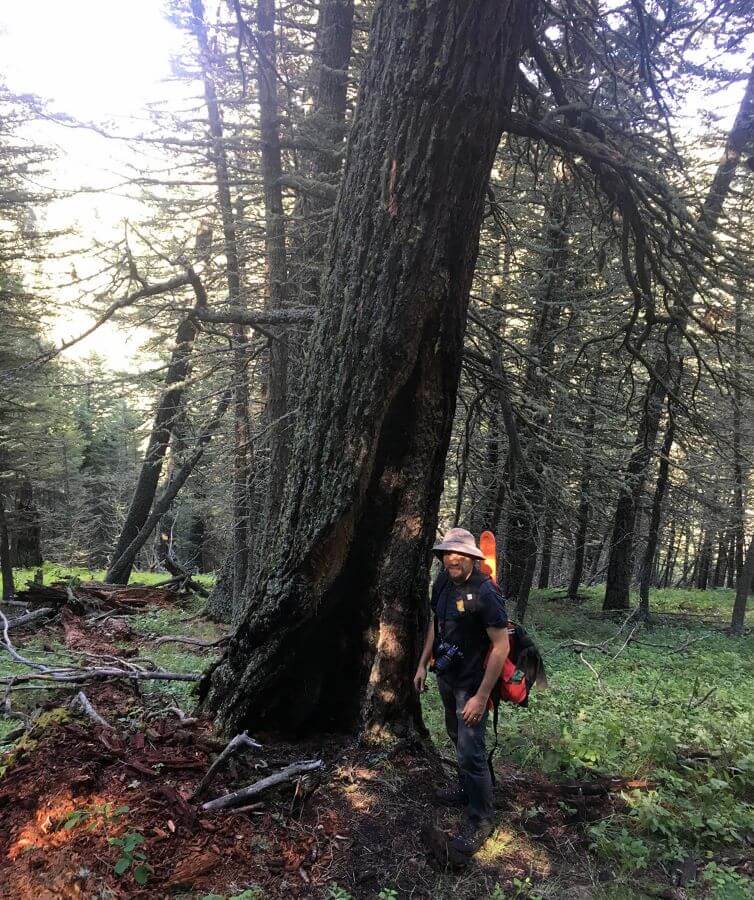
Team members Owen Fitzpatrick (left) and Cameron Naficy (right) stand next to fire-scarred trees in the Landscapes in Motion study area.
The whole crew is very excited to see their field sites and get to know the ecosystems of the eastern slopes of Alberta (especially Owen and Alana, whose experiences have been mostly in coastal ecosystems). Each of them is excited about different aspects of the summer. Alana is hoping they will get to take a helicopter to some of their sites and is looking forward to learning some new plant species. Anna, who grew up in Calgary and has lots of backcountry experience in the area, is looking forward to being outside and is excited for the opportunity to work with role models like Lori Daniels and her graduate students. Owen is looking forward to spending more time in the Foothills and Rockies as part of a project with many applied aspects. Finally, Ashton is looking forward to working with a new team and experiencing these beautiful landscapes with them every day.
They know it will be a physically and psychologically challenging summer, as most field seasons are. They will have to contend with a rapid pace of work, sudden shifts of the weather, the fire season, and (last but not least) a lot of blood-sucking mosquitos. But through their preparations and positive attitudes, this crew is setting themselves up for a successful summer. Landscapes in Motion wishes Owen, Anna, Alana and Ashton the best of luck as they gain new experiences in the southern Rockies—and we thank them for playing such an important role in the project!
Owen Fitzpatrick is a recent Master’s graduate from the University of Victoria with experience as a Research Assistant in dendrochronology on the coast of BC. He is from Nelson, BC.
Anna Howard just completed the second year of her BSc in Conservation Sciences at UBC, and she was drawn to learn more about dendrochronology and fire regimes. She is from Calgary, Alberta.
Alana Gonczar just completed the second year of her BSc in Forestry at UBC, and she was motivated to learn more about landscape ecology and fire as a disturbance process. She is from Olympia, Washington.
Ashton Many Grey Horses is a member of the Piikani Nation, whose traditional lands are within the study area of Landscapes in Motion. He worked with the field crew in 2017 and is re-joining them for this year’s field season.
Sonya Odsen is an Ecologist and Science Communicator with a background in boreal ecology and conservation. She is a regular writer for Landscapes in Motion and is part of the Outreach and Engagement Team for the project.
Every member of our team sees the world a little bit differently, which is one of the strengths of this project. Each blog posted to the Landscapes in Motion website represents the personal experiences, perspectives, and opinions of the author(s) and not of the team, project, or Healthy Landscapes Program.








